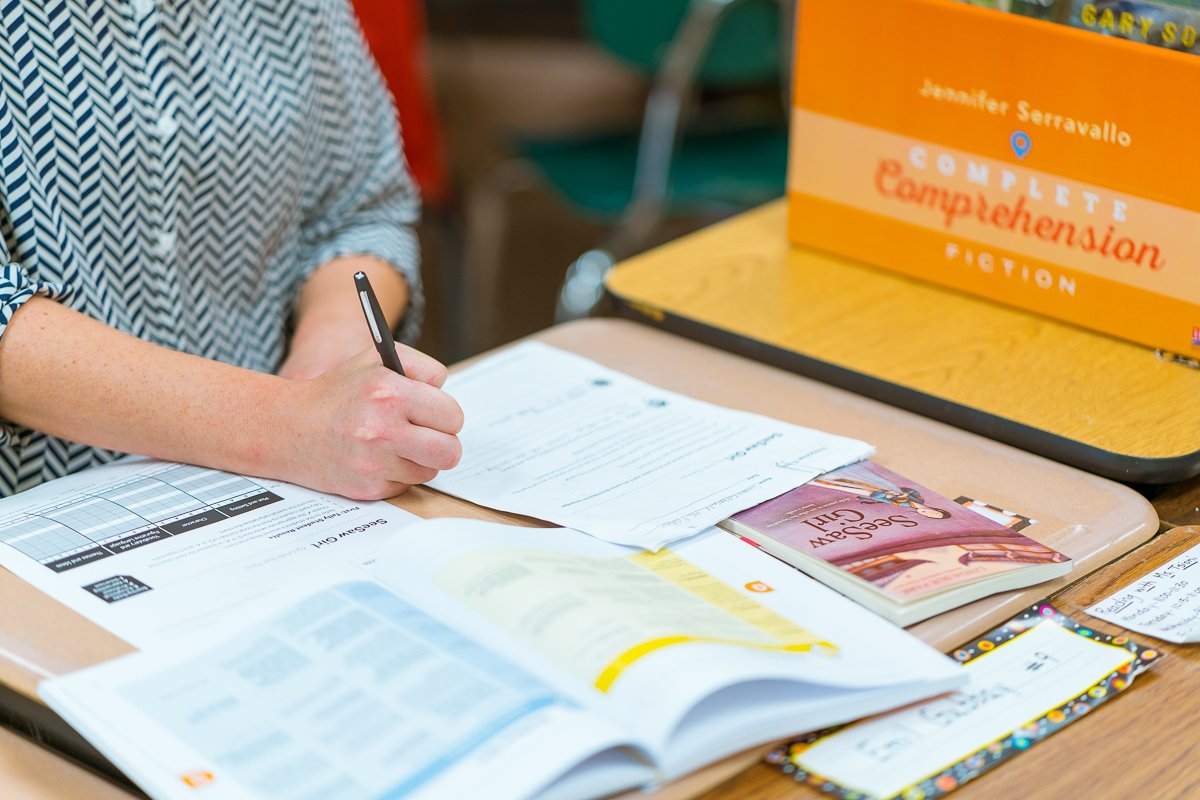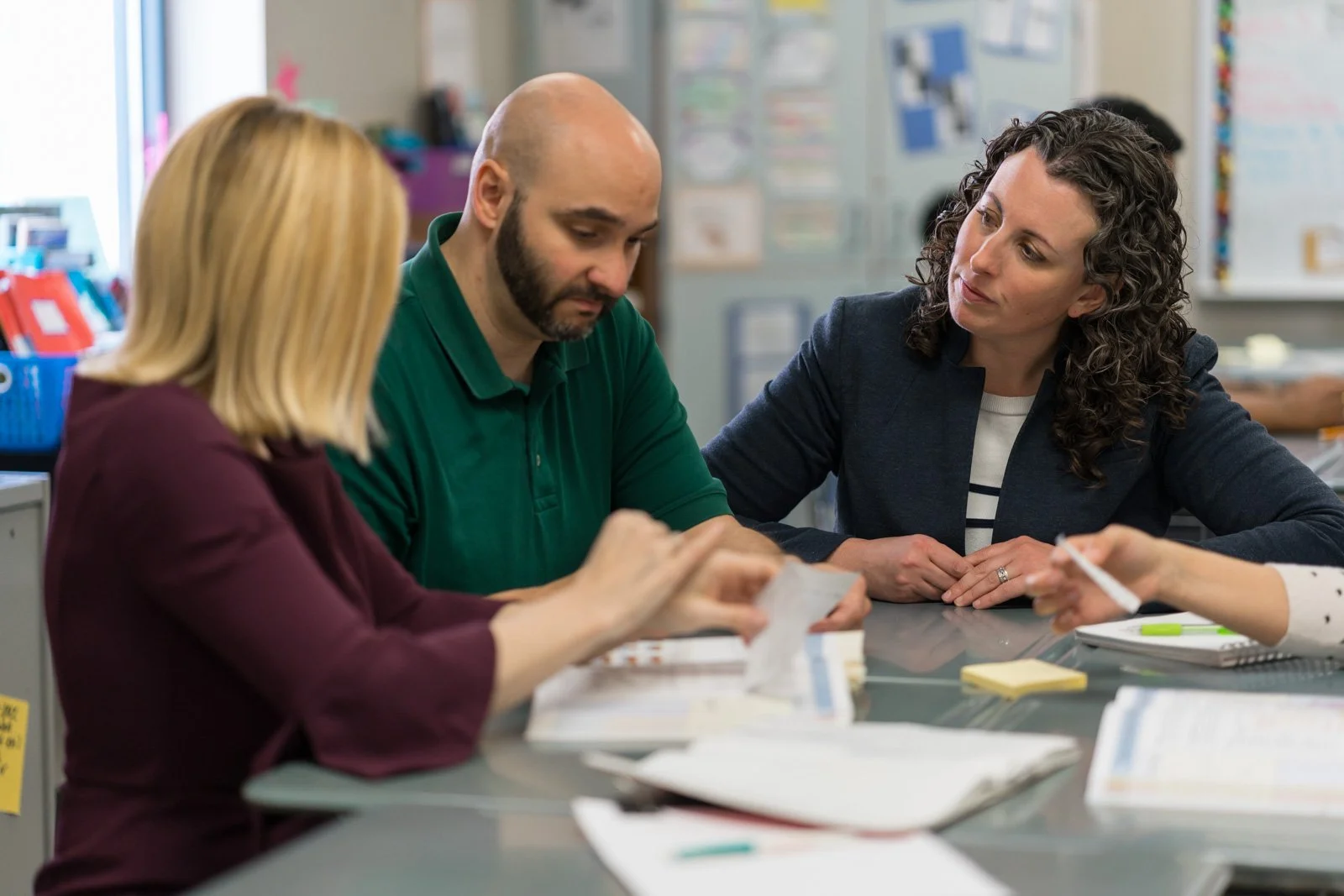
Blog
stay informed
Updated regularly, this is where you’ll find full transcripts of the To the Classroom Podcast as well as blogs by Jennifer Serravallo and her colleagues offering practical tips and ideas for teaching and coaching, inspired by the podcast conversations.
Invest in Teachers, Improve Students’ Literacy
Teachers’ jobs are more challenging than ever. Every educator—from those newer to the profession to veteran teachers—need and deserve quality PD that respects teacher agency and helps them benefit from the latest research, learn new skills, and hone practices that work. And most important, our students deserve teachers who are regularly engaged in refining both the art and science of teaching.
So, what does great professional learning for literacy look like? Based on my decades of experience as a teacher, coach, and leader of a professional learning group, here are a few key elements I focus on…
4 Ways to Modify Lessons for Your Students
A good lesson plan is a critical component to delivering explicit, engaging instruction for students. And although effective lesson plans have key components, they are in some ways as individual as the teachers using them and the students learning from them. Each teacher brings their own background, strengths, experiences, and style to their lessons. And of course, students have unique backgrounds, knowledge, experiences, and learning needs that each lesson must consider and address.
Here are some suggestions as to how you might modify lessons provided by a reading program or curriculum to create a plan that plays to your teaching style and strengths and addresses the specific needs of your students.
3 Lesson Types that Encourage Students to Dig Deep
This blog focuses on three lesson types—close-reading, guided inquiry, and conversation—that are particularly good when students need to dig deep to understand and process a text.
Amplifying Students’ Voices
This To the Classroom Podcast Culturally Responsive Teaching Series wrap up focuses on elevating students’ voices in the classroom, centered on interviews with Drs. Edmund Adjapong, Caitlin Law Ryan, Jill Hermann Wilmarth, and Debbie Reese.
6 Ways to Bring Joy to Every Reading Lesson
As a teacher I am always thinking about what we can do every day to make sure that not only can our kids read but also that they like to read. And yes, I believe it’s important that kids like reading because simply put, if they don’t like to read, they won’t. And that means they will miss out on so much learning, so many exciting new opportunities, and the sheer pleasure of losing oneself in a book.
3 Lesson Types that Support Grade-Level Reading
Daily experience with grade level (or above) texts is key. Research shows that when students grapple with grade-level texts, they not only improve their reading skills, but they also build knowledge, enhance language and communication skills, establish a firm foundation for academic success, and boost self-confidence.
Welcoming and Learning from Diverse Perspectives
Earlier this year and last year I interviewed (for my podcast To the Classroom) some of the most important thought leaders about their work around culturally relevant, responsive, and sustaining teaching practices.
4 Ways to Help Students Tackle Complex Texts
What’s complex to one student may be relatively accessible to others. Some students struggle to read texts at grade level. Others may find scientific language challenging. All students might find poetry or Shakespeare difficult until they learn strategies on how to approach figurative language. Whatever the challenge a particular text poses, I have found that there are four key practices I rely on when introducing any text that’s more complex than what students can read independently.
4 Steps to Teach Vocabulary Across the Day
As teachers we can help expand students’ vocabulary by adding vocabulary building goals to all of our lessons, and adding a vocabulary lesson structure to our repertoire of lesson types used. Below are four ways all teachers can actively, and easily, work vocabulary instruction into all subjects across the day.
Engagement: Thoughtful Planning, Skilled Teaching
Recent research about explicit instruction has shown what teachers have always known: student engagement is a critical component of learning from any lesson. And yet engaging a room-full students with diverse learning needs is challenging even on the very best of days. So, how can we as teachers best keep students actively involved and learning throughout an entire lesson? Through thoughtful planning and skillful, artful teaching.
4 Reasons All Teachers Are Reading Teachers
We learn to read. And we read to learn. Right from the vey start. And for the rest of our lives. Being able to read well opens worlds of learning and presents boundless possibilities at school and beyond. From the time we first learn to read, reading becomes essential to our day. We read texts, articles, instructions, articles, poetry, novels that enrich our understanding of ourselves and others. Since reading is so critical to success in school and in life, the job of teaching students to read belongs to all of us.
3 Steps to Planning an Engaging, Explicit Read-Aloud Lesson
To plan for read-aloud lessons, which have a clear instructional purpose, often referred to as dialogic reading or an interactive read aloud, teachers carefully select texts matched to instructional goals, purposefully plan how to get students to think strategically about the text, weave in vocabulary and knowledge goals, and model reading strategies.
Five Ways to Become a More Responsive Teacher
Being flexible and responsive is key to student learning…learn five ways to be responsive to students during your planning and delivery of lessons.
Four Ways Lesson Structures Save the Day
Lesson structures, like the nine from my new book Teaching Reading Across the Day, help save you time, lessen cognitive load for students, and free you up to teach responsively.
5 Tips for Successful Small Group Instruction
We all know small group reading instruction is an essential, research-supported practice since every classroom has unique learners with different needs. When executed well, small groups provide opportunities for individualized instruction, collaborative learning, concentrated assessment, scaffolded practice, and a high level of engagement.
Leigh Patel and Shawna Coppola
Jennifer Serravallo interviews Dr. Leigh Patel about her recent essay on decolonizing.net: “What I learned from debating the Science of Reading Nearly 20 Years Ago.” Dr. Patel is a transdisciplinary scholar whose research focuses on both the ways schooling delivers inequities and how education can be a tool for liberation. In the second half, she’s joined by Shawna Coppola, author of the recent book Literacy for All: A Framework for Anti-Oppressive Teaching to discuss the interview and takeaways for the classroom.
Zaretta Hammond
Today’s guest is the brilliant Zaretta Hammond, author of Culturally Responsive Teaching and the Brain. We’ll talk about the science behind her recommended “six core design principles” that she calls “culturally responsive brain rules”. Later, I’m joined by my colleague Jerry Maraia for a continued conversation about practical takeaways. This is To the Classroom, and I’m your host, Jennifer Serravallo.
Leala Holcomb
My guest today is Dr. Leala Holcomb, a researcher of deaf education at the University of Tennessee, Knoxville, who accepted my invitation to teach us all about what true equity and inclusion looks like when supporting deaf children’s language and literacy development. At Dr. Holcomb’s request, I interviewed them in writing via a collaborative online document, and I have hired a voice actor, Ginna Hoben, to read Dr. Holcomb’s words for this podcast interview. As with all episodes, a transcript of this episode is available at my website, JenniferSerravallo.com/podcast.
Chris Wenz
My guest today is Chris Wenz, researcher and teacher, whose dissertation focused on profiles of adolescents with Autism Spectrum Disorders. We begin our conversation with an understanding of the diverse profiles of autistic individuals, and move into a conversation about considerations for literacy assessment and teaching. In the second part of the episode I’m joined by my colleague Elisha Li, a former elementary inclusion teacher, to discuss practical takeaways.






















